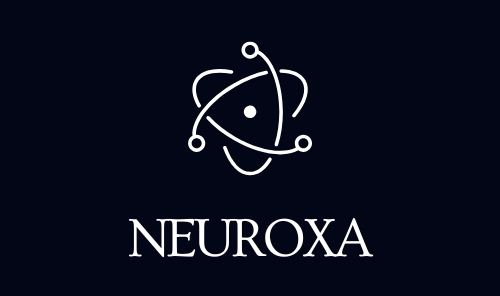📲 Democratizing Access and Personalizing Learning
The primary value proposition of AI in Africa is its ability to scale personalized learning to millions of students, even in resource-constrained and rural environments. This directly addresses the problem of large class sizes and limited teacher capacity.
The Power of Low-Bandwidth AI Tutors
AI-powered EdTech platforms are utilizing existing, accessible infrastructure—specifically mobile phones and low-data communication apps—to deliver educational content:
- WhatsApp-Based Tutors: Platforms like Luma Learn (developed by Rising Academies) and others use the WhatsApp interface, which is already on most phones and works on low bandwidth. These AI tutors deliver bite-sized math and science lessons, quiz students, and provide real-time explanations tailored to the student’s grade level and specific curriculum.
- Adaptive Learning Engines: Platforms like M-Shule (East Africa) and Siyavula (South Africa) use machine learning to analyze a student’s performance patterns, adjusting the difficulty, format, and pacing of practice problems. This hyper-personalization ensures students master concepts before moving on, solving the learning deficiency problem where students complete school without mastering basic skills.
AI effectively becomes the personal teaching assistant that a student in a rural community desperately needs, offering highly individualized assistance previously reserved for expensive private schools.
2. 🗣️ Localization and Inclusivity Through AI
One of the biggest obstacles to quality education in Africa is the lack of learning materials in local and indigenous languages. AI is proving instrumental in bridging this linguistic and cultural gap, making education truly inclusive.
Scaling Culturally Relevant Content
- Multilingual Content Creation: Projects like RobotsMali used a combination of ChatGPT, machine translation, and human editors to rapidly produce over 180 culturally relevant children’s books in Bambara, a Malian local language, at a fraction of the traditional cost. AI suggests contextually appropriate examples and aids in the translation and localization of core curriculum materials (e.g., STEM textbooks).
- Assistive Technologies: AI is crucial for inclusive education. Kenya’s Maseno University, in collaboration with Deaf communities, developed a tool that translates between English and Kenyan Sign Language. Other projects leverage text-to-speech technologies to make content in local languages accessible for neurodiverse learners or those with visual impairments.
- Curriculum Relevance: AI tools are being used to help educators draft initial content that aligns with national curriculum requirements while suggesting localized, culturally relevant examples (e.g., using local agricultural practices in a biology lesson), ensuring the learning is both relatable and practical.
3. 👩🏫 Empowering the Teacher and Streamlining Administration
AI’s role in the African classroom is not to replace teachers, but to multiply their reach and efficiency. By automating repetitive tasks, AI frees up teachers’ limited time to focus on complex pedagogical interactions and emotional support.
Reducing Administrative and Pedagogical Overheads
| AI Application | Teacher Benefit | Impact on Teacher Capacity |
| Automated Grading & Feedback | Tools use Optical Character Recognition (OCR) to grade handwritten assessments, track student progress, and provide immediate, individualized feedback. | Saves teacher time (reported to be a major burden), allowing more time for direct student engagement. |
| Data Analytics | AI-driven systems use learning analytics to track student progress in real-time, identifying which students are at risk of falling behind or dropping out. | Enables early intervention and targeted support before a student’s learning gap becomes insurmountable. |
| Administrative Streamlining | Student Information Management Systems (SIMS) automate attendance, fee tracking, performance reporting, and timetable coordination (e.g., in schools in Rwanda). | Improves administrative efficiency and transparency, reducing non-core workload. |
By supporting pedagogy and reducing the time spent on non-core tasks, AI helps ensure that teachers can maintain the quality of instruction even in classrooms with high student-to-teacher ratios.
4. 🚧 Challenges and the Path to Responsible Integration
Despite its immense promise, the widespread, equitable adoption of AI in African education faces significant, structural challenges that must be addressed through concerted policy action.
Core Challenges and Strategic Solutions
| Challenge Area | Description of Barrier | Strategic Solution |
| Infrastructural Divide | Unequal access to electricity, reliable broadband internet, and devices (though mobile use helps, it doesn’t solve all issues). | Strategic investment in hybrid models (physical hubs + digital access) and policies to expand affordable broadband. |
| Digital Skills Gap | Teachers and policymakers lack the competency and training to effectively integrate AI tools into the curriculum and manage the data. | National AI Competency Frameworks for teachers and students, focused on pedagogical and ethical skills. |
| Data Sovereignty & Bias | Reliance on AI models and platforms developed outside the continent; risk of algorithmic bias reflecting non-African contexts; data privacy concerns for minors. | Develop local, context-sensitive governance frameworks and encourage the development of home-grown AI solutions that prioritize local data and cultural norms. |
| Curriculum Alignment | Ensuring AI tools and content align strictly with diverse national curricula, which are often being updated. | Collaboration between EdTech startups and Ministries of Education to co-design tools that map directly to national learning outcomes. |
The African Union’s Continental Artificial Intelligence Strategy and UNESCO’s guidance on the Ethics of AI underscore the commitment to responsible integration. The focus is to ensure that AI strengthens human-centered learning and critical thinking, preventing the perpetuation of existing inequalities while preparing the continent’s youth to lead in the Fourth Industrial Revolution.
A Trillion-Dollar Opportunity
If the continent successfully captures just 10% of the global AI market, AI is projected to add up to US$1.5 trillion to the African economy by 2030. This growth is anticipated to generate over 230 million new digital jobs in Sub-Saharan Africa by the same year. This massive job creation potential, however, is contingent upon a fundamental overhaul of the current education system to align learning outcomes with emerging industry needs.
From Consumption to Creation
The challenge is shifting Africa’s role in the global AI value chain from being primarily a consumer (using foreign-made apps) to a creator and exporter of AI services. This requires embedding AI literacy—not just coding—into the foundational curriculum:
- Curriculum Integration: Countries like South Africa are piloting AI literacy modules in secondary schools, moving the topic beyond an elective and making it a core competency. The focus is on concepts like algorithmic bias, data ethics, and prompt engineering, transforming students into informed citizens capable of using and questioning AI.
- Targeted Skilling: AI-driven platforms can analyze real-time labor market demands in sectors like agritech, healthtech, and fintech. This data allows institutions to deliver adaptive micro-curricula that focus on high-value skills—such as predictive maintenance or machine learning for diagnostics—ensuring graduates possess the precise competencies employers need, closing the notorious skills gap.
By making this strategic investment, African nations are leveraging their greatest asset—their burgeoning youth population—to leapfrog older industrial models and position the continent as a powerful, agile competitor in the global AI economy.
Source List
- UNESCO: International Day of Education 2025: AI and education – Preserving human agency in a world of automation
- African Union: Continental Artificial Intelligence Strategy (Recognizing education as a priority sector)
- Dalberg Group: Growing Impact of Artificial Intelligence (AI) in African Education
- UNICEF/Africa Renewal: AI and the future of learning (Focus on Luma Learn, Lumo Hubs)
- APHRC: Embracing AI in Education (Kenya National AI Strategy 2025-2030)
- IDRC: From commitment to action: Advancing the use of AI in education in Africa (Focus on Maseno University, RobotsMali)

